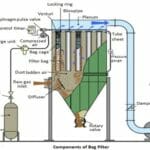- Course No E – 3013
- PDH Units: 7
No data found for Custom Course Number
No data found for Custom Course Units
- Course No E – 3013
- PDH Units: 7
Intended Audience: for Structure Engineers, Architects, project managers, contractors, and facility planners involved in federal building design, construction, and maintenance.
PDH UNITS: 7
Learn how to fortify federal structures against progressive collapse with design methodologies. This course explores federal guidelines, focusing on creating resilient and secure buildings through redundancy, structural reinforcement, and advanced analysis techniques. Ideal for engineers, architects, and security professionals, this program delves into real-world scenarios, offering practical tools to prevent catastrophic structural failures. Uncover how federal standards blend engineering innovation and safety protocols to meet today’s security challenges, ensuring the continuity of operations in critical facilities. Course Outline Introduction to Progressive Collapse Resistance Definition and importance of progressive collapse prevention. Historical context and real-world implications. GSA Guidelines Overview Purpose, philosophy, and organization of the guidelines. Alignment with federal security standards and regulations. Applicability and Scope Understanding Facility Security Levels (FSL). Distinguishing requirements for new and existing buildings. Alternate Path Methodology Principles of the alternate path method. Linear, nonlinear static, and nonlinear dynamic analysis techniques. Design Procedures Force-controlled and deformation-controlled actions. Material-specific requirements for concrete, steel, masonry, wood, and cold-formed steel. Structural Redundancy Requirements Load redistribution systems and their role in resilience. Ensuring redundancy across building heights. Application to Reinforced Concrete Structures Material properties, strength factors, and tie force requirements. Modeling and acceptance criteria. Application to Structural Steel Connection capacities and rotational requirements. Enhanced local resistance strategies. Application to Masonry, Wood, and Cold-Formed Steel Material-specific guidelines for progressive collapse resistance. Limitations and design recommendations. Innovative Analysis Techniques Using rational alternatives and advanced modeling. Case studies showcasing successful implementations. Future Directions in Structural Resilience Emerging trends in progressive collapse prevention. Integrating sustainability and resilience in design practices. Progressive collapse can lead to catastrophic failures, causing widespread damage and loss of life. This course introduces the GSA guidelines, equipping participants with knowledge and tools to design structures capable of withstanding these risks. From understanding load redistribution to mastering material-specific requirements, attendees will gain invaluable insights into creating safe, compliant, and future-ready buildings. This course is designed for structural engineers, architects, project managers, and construction professionals involved in designing and assessing federal buildings or those interested in progressive collapse resistance.
Learning Objectives
At the successful conclusion of this course, you’ll be able to identify and discuss:- Understand the principles and significance of progressive collapse resistance.
- Apply the GSA alternate path methodology to building design.
- Distinguish between force-controlled and deformation-controlled actions.
- Evaluate structural redundancy and load redistribution requirements.
- Design reinforced concrete structures for progressive collapse resistance.
- Implement enhanced local resistance measures in steel structures.
- Integrate material-specific guidelines for masonry, wood, and cold-formed steel.
- Navigate federal security standards and their application to structural design.
- Perform linear, nonlinear static, and nonlinear dynamic analyses.
- Leverage advanced tools for progressive collapse modeling.
- Identify critical load-bearing elements and optimize designs accordingly.
- Ensure compliance with GSA and ASCE standards in building projects.
- Advocate for resilient building practices in professional projects.
Once completed, your order and certificate of completion will be available in your profile when you’re logged in to the site.










